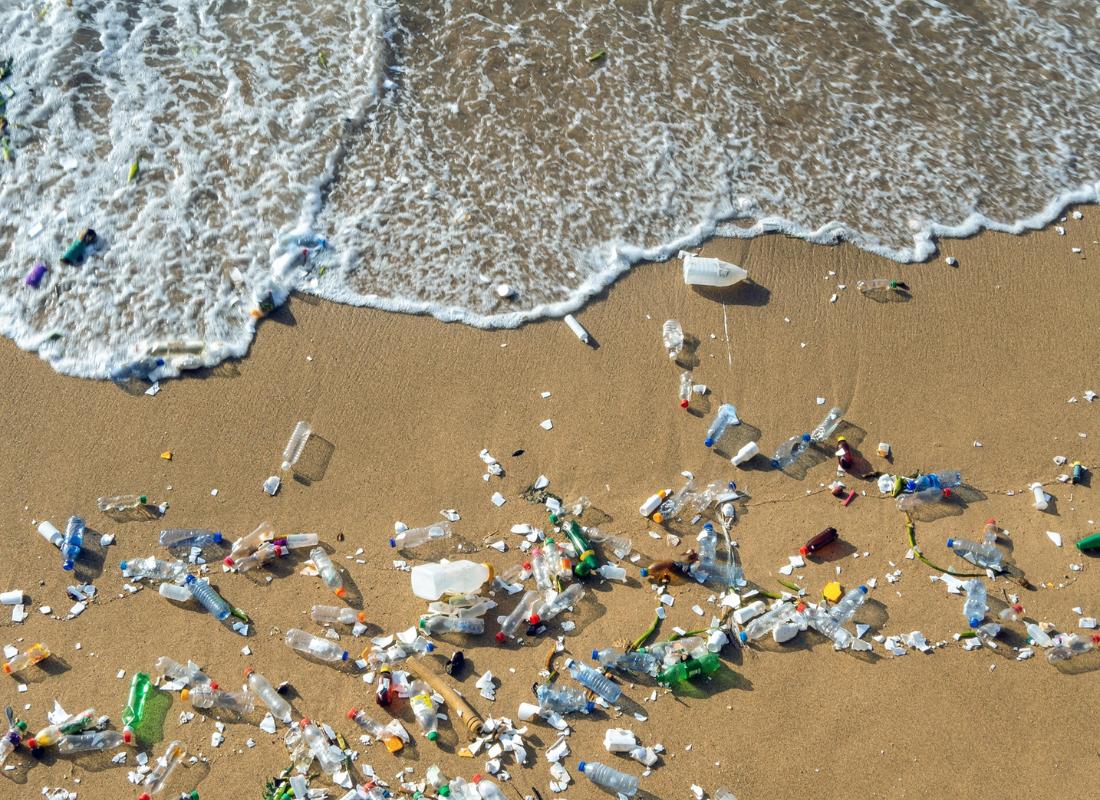
Sea pollution is a significant environmental issue affecting marine ecosystems, human health, and global economies. Here are the main types of sea pollution, their sources, and impacts:
1. Plastic Pollution

Overview:
- Sources: Single-use plastics, packaging materials, discarded fishing nets (ghost nets), microplastics from personal care products and synthetic clothing.
- Impact: Marine animals ingest plastic, which can lead to blockages, starvation, and death. Plastics also release toxic chemicals as they degrade, harming marine life and entering the food chain.
Key Examples:
- The Great Pacific Garbage Patch, a massive area of floating plastic debris in the North Pacific Ocean, highlights the scale of plastic pollution.
2. Chemical Pollution

Overview:
- Sources: Industrial discharge, agricultural runoff, oil spills, and sewage.
- Impact: Chemicals like pesticides, heavy metals, and polychlorinated biphenyls (PCBs) can cause serious health problems in marine life, including reproductive issues, growth defects, and death. These chemicals can accumulate in the food chain, affecting predators, including humans.
Key Examples:
- The Deepwater Horizon oil spill in 2010 released millions of barrels of oil into the Gulf of Mexico, causing extensive damage to marine ecosystems.
- Agricultural runoff leading to nutrient pollution and the creation of dead zones, where oxygen levels are too low to support most marine life.
3. Nutrient Pollution

Overview:
- Sources: Runoff from agriculture (fertilizers), wastewater, and animal manure.
- Impact: Excess nutrients, primarily nitrogen and phosphorus, lead to eutrophication. This process results in harmful algal blooms (HABs), which produce toxins and deplete oxygen in the water, creating dead zones where marine life cannot survive.
Key Examples:
- The Gulf of Mexico Dead Zone, primarily caused by nutrient runoff from the Mississippi River, is one of the largest hypoxic areas in the world.
4. Noise Pollution

Overview:
- Sources: Shipping traffic, oil and gas exploration (seismic surveys), naval sonar exercises, and construction activities.
- Impact: Noise pollution disrupts the communication, navigation, and hunting behaviors of marine animals, particularly cetaceans like whales and dolphins, which rely heavily on sound.
Key Examples:
- Increased shipping traffic in busy ports and major sea routes contributes significantly to underwater noise pollution, affecting marine life over vast areas.
5. Light Pollution

Overview:
- Sources: Coastal urban development, offshore platforms, and ships.
- Impact: Artificial light affects the behavior of marine animals, including sea turtles, whose hatchlings can become disoriented and fail to reach the sea. It also impacts the behavior of nocturnal species and disrupts natural cycles.
Key Examples:
- Light pollution from coastal cities can disorient sea turtle hatchlings, leading to higher mortality rates as they attempt to reach the ocean.
6. Plastic Microbeads

Overview:
- Sources: Personal care products like exfoliants and toothpastes, which contain tiny plastic beads.
- Impact: Microbeads can absorb toxins from the water, and when ingested by marine organisms, these toxins can enter the food chain.
Key Examples:
- Many countries have banned microbeads in personal care products due to their harmful environmental impact, but they persist in some regions and continue to pose a threat to marine life.
7. Radioactive Pollution

Overview:
- Sources: Discharges from nuclear power plants, dumping of nuclear waste, and accidents.
- Impact: Radioactive substances can cause genetic mutations and cancers in marine life. They can also bioaccumulate, posing risks to higher trophic levels, including humans.
Key Examples:
- The Fukushima Daiichi nuclear disaster in 2011 released significant amounts of radioactive material into the Pacific Ocean, affecting marine ecosystems and fisheries.
Conclusion

Sea pollution encompasses a variety of harmful substances and energies that degrade marine environments and impact both marine life and human health. Addressing these pollution types requires comprehensive strategies, including better waste management practices, stricter regulations, and increased public awareness. By understanding the different types of sea pollution, we can work towards more effective solutions to protect our oceans.
Sources:
https://www.nationalgeographic.com/environment/article/critical-issues-marine-pollution
https://marinedebris.noaa.gov/
https://www.worldwildlife.org/initiatives/oceans
https://blog.cleanhub.com/the-top-6-ocean-pollutants
https://www.marineinsight.com/environment/types-of-ocean-pollution/




